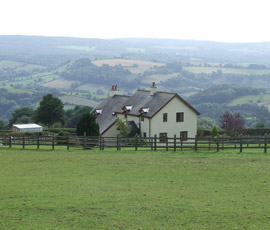Agriculturally tied dwellings have much to offer

Agricultural occupancy conditions or “ties” allow new dwellings to be built in the open countryside.
Where these conditions attach to planning permission, that permission will only have been granted because someone was able to demonstrate an essential need for new accommodation close to a place of work in either agricultural, forestry or equestrian employment.
Soon to come on to the market, Scatter Rock (above) is an agriculturally tied property for sale through Stags with a guide price of £1.2m. In the Teign Valley, near Exeter, Devon, it has 104 acres and includes a lake, two former quarries and a converted holiday cottage as well as the house.
As such, the tie seeks to restrict occupancy of the dwelling to those employed in certain jobs. Dating from the first Town and Country Planning Act (1948), they have survived despite a declining agricultural workforce. They continue to allow new houses to be built where otherwise they would not.
The conditions have also evolved over the years; current wording for new AOCs refers to occupants needing to be mainly, or last (such as retired farmers), employed in agriculture, forestry or equestrian activities.
A tied dwelling put up for sale will be discounted, typically at about 70% of full market valuation. For a sizeable farm or estate, occupancy conditions may not impinge much on value or sale – many buyers are going to want to house staff, says Alex Lawson of Savills, London. Depending on size, scale, location, context and nature of the property, the discount can be less than 20% and as little as 10%.
Most AOCs can be lifted, but it has to be demonstrated that there is no longer a current or foreseeable need. To prove this, the tied property has to be marketed unsuccessfully for at least one or two years, at a value relevant to its potential buyers.
Some “fudging” around occupancy compliance is not uncommon, agents concede. But it is at the buyer’s own risk, and their solicitors will have made them aware of the need to comply.
“A buyer definitely needs to enter this with their eyes open,” says Alex Rew of Stags, Exeter. “If they don’t comply, they should make sure they can. It might be not be checked but there are surprising numbers of unlawful use that do, for whatever reason, get found out.”
Any non-compliance that runs undiscovered, typically for at least 10 years, may give the owner the opportunity to apply for a certificate of lawful use (CLEUD) so they no longer face enforcement unless the need for the tie is revived.
Jeremy Proctor of Bidwells cautions against any cover-up, however, saying that a change of use is less likely to be achieved if a scam is seen to have been perpetrated at any stage.
Professional eyes on smallholdings market
